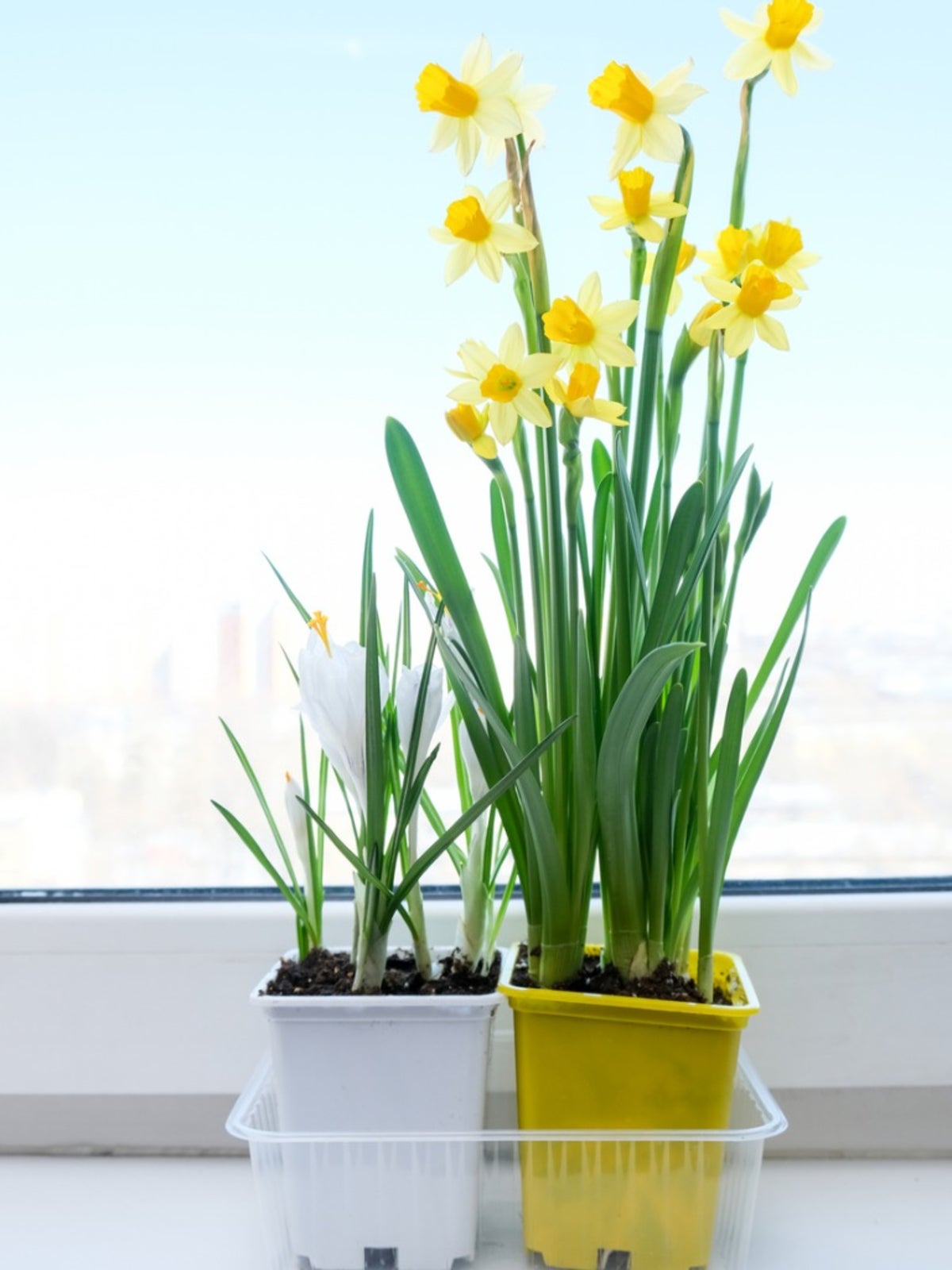Growing Daffodils Indoors - Forcing Daffodils Into Bloom


Forcing daffodils into bloom is an excellent way to help stave off mid-winter blues. Seeing a bright yellow daffodil indoors while the daffodils outside are still fast asleep under snow is enough to bring a smile to anyone's face. Growing daffodils indoors is not difficult. Let's look at how you can force daffodils into bloom inside.
Growing Daffodils in Water or Soil
First, choose which growing medium you will use to grow a daffodil indoors. Your choices are water or soil. If you choose water, you will need to get a forcing glass, which is a cup specially designed to hold the daffodil bulb upright over water. Each forcing glass will hold one daffodil. This is an excellent choice if you only want to grow a few daffodils to brighten up a dark corner. Forcing daffodils in soil is more common and just as satisfying. You will need a shallow dish and some indoor potting soil. Use a dish that is big enough to hold all the bulbs you intend to grow and is as deep as the daffodils are tall. The dish should also have drainage holes. If it does not, add a thin layer of gravel to the bottom of the dish.
Choosing Daffodil Bulbs
Next, choose the bulbs you will use to force daffodils. Look for plump bulbs with skin that is not loose. It's okay if the bulb has sprouted some, just be careful that you do not damage the sprout.
Planting the Daffodil Indoors
If growing in water, fill the forcing glass with plain water and set the bulb on top of the glass. If growing in soil, cover the bottom of the dish with soil, high enough so that the top third of the bulb will stick up over the top of the dish when they are planted. Now, place the daffodil bulbs on the soil. They can be placed as tight as side by side. Cover the bulbs with additional soil, leaving the top third of the bulb above the soil. Water the soil, but do not drown the bulbs.
Care of Your Daffodil Indoors
If growing daffodils in water, once your daffodil bulbs have some roots, add 1 teaspoon of vodka. The vodka will stunt the growth of the stem, so that the bulb will be less likely to fall over. It will not affect the blossom at all. If you are growing daffodils in soil, water as needed. When forcing daffodils, fertilizing is not necessary. The bulb has everything it needs inside it to create a lovely flower, so you do not need to fertilize. Taking the time to force daffodils in your home can help make the long winter seem much shorter. Forcing daffodils is both easy and fun.
Sign up for the Gardening Know How newsletter today and receive a free copy of our e-book "How to Grow Delicious Tomatoes".

Heather Rhoades founded Gardening Know How in 2007. She holds degrees from Cleveland State University and Northern Kentucky University. She is an avid gardener with a passion for community, and is a recipient of the Master Gardeners of Ohio Lifetime Achievement Award.